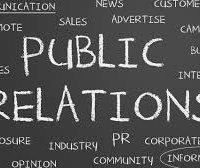Public Relations demands structure
Public Relations (PR) is a supplement to marketing and advertising, and it bundles the efforts that are made to inform or influence interested parties. Read more how you can strategically deploy.
PR tactically uses certain communication resources, with the objective of repairing, confirming or improving an image. More than ever before, PR requires a strategic approach, in view of the profusion of available information.
The focus of a modern PR plan therefore lies on the quality of the media and the relations and, to a lesser extent, on the quantity. The development of an annual PR plan, budget and clearly defined Key Performance Indicators (KPIs) is important for planned and therefore expected events. However, unexpected events, and possible consequences thereof, also have to be given consideration in the planning.
Maintaining a direct contact with the target group, via in-house or external media
The ongoing expansion of media resources makes Public Relations in the year 2011 highly multi-faceted and, at the same time, exceedingly complex. PR is embedded in a broader communications plan that, nowadays, not only concerns the involvement of the press and providing people with information.
- In-house media
All external communication plans should start with some internal reporting. Your internal stakeholders (employees, partners, shareholders, etc) can become your ambassadors. Make sure not to underestimate the value of an internal communications strategy.
Resources: Intranet – e-news – online community – newsblog – personnel bulletin – newsletter –…A good story has the power of reaching people. Today, social networks and video blogs provide us with new angles for online storytelling. Now that the Internet is also becoming accessible to people increasingly via their mobiles, storytelling has once again gotten an attractive image as a supporting tool. The distribution of in-house content has never been this simple. The distribution of good content that increases credibility is, however, the great challenge.
Resources: Website – book – online community – newsfeeds – video blogs – lectures –… - External media
External media consists of communication channels that are aimed at an external public. These media will only give a company attention when there is news. News is unexpected by definition, at least for the recipient. The speed of news dissemination, which has become available since the advent of the Internet, is not to be overlooked. News dissemination also occurs through various influentials. Both the general press and normal people can have a strong (online) network and therefore be an influencer.Your news is preferably segmented, targeted for the recipient and above all relevant. Although media relations are nowadays occurring increasingly online, the traditional PR tools have definitely not been written off. The dissemination of news reports, via influentials that have been defined in advance, demands a structured approach. An integrated media plan, with image objectives that are clearly defined in advance, is the best way to build relations.
Resources: Press reports – press conferences – special actions – stakeholder events – sponsoring – etc.
Potential influentials: Journalists – bloggers – partners – experts – scientists –…
You should therefore not put your PR strategy or plan in the hands of an agency, which limits itself to writing press articles. Instead you should develop a strategy or plan that goes beyond pure communications.
- Relations
The development and maintenance of relations with your (target) public is the point of departure of every PR professional. In a structured PR approach, the focus should be on the relational. You should therefore create a contact database that is sufficiently segmented and includes the right people (journalists, bloggers, stakeholders, etc.). Without exception, the final PR plan should include1 an approach that subscribes to building up and maintaining these relations.
Measuring is knowing?
A measuring programme for PR is not self-evident and, above all, requires a lot of time. The analysis of PR activities is weighed against KPIs that have been the find in advance. The conclusion(s) of such a performance analysis will frequently be the basis for justifying the new, annual PR budget.
Key metrics for evaluating your PR activities must be quantified for the following aspects:
- Brand attributes (contrasted with competitors)
- Message performance
- Overall share of ink
(Source: KD Paine)


